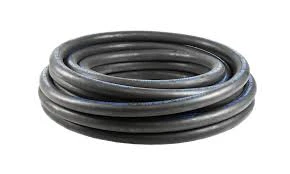R134a Adapter Fittings for Efficient Refrigerant System Connections and Upgrades
Understanding R134a Adapter Fittings A Comprehensive Guide
In the world of refrigeration and air conditioning, the R134a refrigerant has become a staple. With its applications spanning automotive air conditioning systems to commercial refrigeration, understanding the components associated with R134a is crucial. One such critical component is the R134a adapter fitting. This article delves into the significance of these fittings, their types, applications, and tips for proper usage.
What Are R134a Adapter Fittings?
R134a adapter fittings are essential connectors that allow different components of an air conditioning or refrigeration system to work together seamlessly. They serve the purpose of linking hoses, valves, and other hardware configured to use R134a refrigerant. As many older systems were designed for R12 refrigerants, the introduction of more environmentally friendly refrigerants like R134a necessitated the development of these adapters. They enable a smooth transition by allowing modern refrigerants to be used in existing systems.
Types of R134a Adapter Fittings
R134a adapter fittings are available in various types, including
1. Low-Pressure Service Ports These fittings are typically used for the low-pressure side of an R134a system. They allow technicians to check the refrigerant level and perform necessary maintenance.
2. High-Pressure Service Ports Found on the high-pressure side, these fittings are crucial for measuring high-side pressure and assessing system performance.
3. Standard and Mini-Fittings Depending on the system design, R134a fittings may come in standard sizes or mini variants. Mini-fittings help save space in compact systems, while standard fittings are more common in larger applications.
4. Retrofit Adapters These are specially designed to convert R12 fittings to R134a. They allow older air conditioning systems to be updated to safely use R134a refrigerants without the need for complete system replacements.
Applications of R134a Adapter Fittings
r134a adapter fittings

R134a adapter fittings are widely used across multiple industries. Their most common application is in automotive air conditioning systems. Here, they facilitate quick and easy connections for refrigerant charging, service, and repair. Once a mechanic connects a gauge set to the low and high-pressure service ports using R134a adapter fittings, they can assess the system's health and efficiency.
In commercial refrigeration, these fittings play a similar role, allowing technicians to maintain and service units such as refrigerators, freezers, and cooling systems. This versatility makes R134a adapters essential tools for HVAC (Heating, Ventilation, and Air Conditioning) professionals, ensuring systems operate safely and efficiently.
Installing and Using R134a Adapter Fittings
Proper installation and usage of R134a adapter fittings are essential to maintain system integrity and prevent leaks. Here are some tips to ensure successful integration
1. Choose the Right Fitting Ensure that the adaptor matches the R134a specifications and is compatible with both the refrigerant and the system components.
2. Inspect Fittings Before installation, check for any damage or wear on the fittings. Cracked or worn parts can lead to leaks, compromising system performance.
3. Use Proper Tools Utilize the necessary tools, like wrenches and torque gauges, to avoid damaging the fittings during installation.
4. Tighten Securely Ensure all connections are tightened properly but do not overtighten, as this can strip threads or crack components.
5. Test for Leaks After installation, test the system for leaks using a refrigerant leak detector. This step is critical to ensure the efficiency and longevity of the air conditioning or refrigeration system.
Conclusion
In summary, R134a adapter fittings are fundamental components in modern refrigeration and air conditioning systems. Understanding their types, applications, and best practices for installation can significantly enhance the efficiency and reliability of these systems. With the growing demand for R134a and similar refrigerants, knowledge and proper handling of these fittings are more important than ever. Whether you're a professional technician or a DIY enthusiast, being well-informed about R134a adapter fittings will undoubtedly contribute to successful maintenance and operation of air conditioning systems.
-
Ultimate Spiral Protection for Hoses & CablesNewsJun.26,2025
-
The Ultimate Quick-Connect Solutions for Every NeedNewsJun.26,2025
-
SAE J1401 Brake Hose: Reliable Choice for Safe BrakingNewsJun.26,2025
-
Reliable J2064 A/C Hoses for Real-World Cooling NeedsNewsJun.26,2025
-
Heavy-Duty Sewer Jetting Hoses Built to LastNewsJun.26,2025
-
Fix Power Steering Tube Leaks Fast – Durable & Affordable SolutionNewsJun.26,2025

